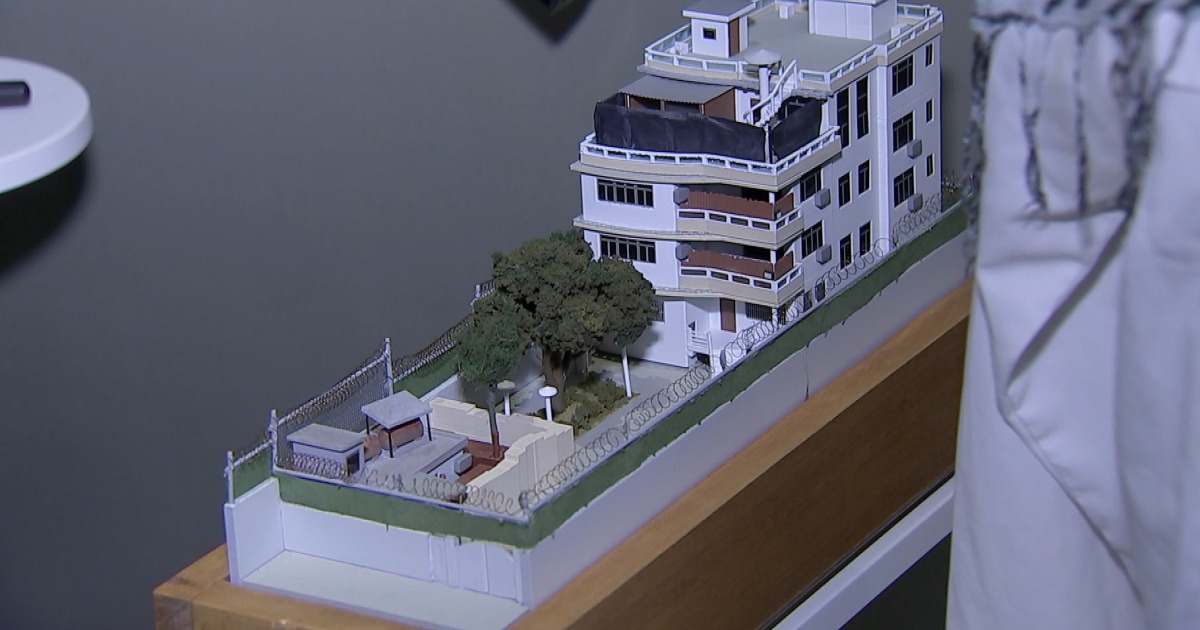
The CIA on Saturday unveiled the model of Ayman al-Zawahiri’s safe house in Kabul used to plan the U.S. drone strike that killed the Al-Qaeda leader last month.
The scale model of Zawahiri’s house was shown to reporters as part of a tour of a newly refurbished museum at the agency’s headquarters.
“This was the model that was used to brief President Biden on the Zawahiri mission,” said Janelle Neises, deputy director of the CIA museum.
The model, about a foot long with precise detail, shows a miniature four-story white structure surrounded by a wall topped with concertina wire. Zawahiri was struck by a Hellfire missile as he stood on the balcony of the house, U.S. officials say. A balcony is clearly visible on the model.
Biden gave the green light for the drone strike after he was assured that there was a low risk of civilian casualties given the weapon to be used and the structure of the house, U.S. officials say.
In announcing the successful strike, Biden described al-Zawahiri as a “mastermind” of the 9/11 attacks and said he also played a key role in the bombings of U.S. embassies in Kenya and Tanzania in 1998.
“He carved a trail of murder and violence against American citizens, American service members, American diplomats and American interests,” Biden said.
The model was only recently declassified and is one of more than 600 artifacts in the newly revamped museum, which is not open to the public.
Next to the model in the same display case is the rifle used by the first American to die in combat in the war in Afghanistan, CIA officer Mike Spann, as well as his vest. Spann, part of a CIA paramilitary team, was killed in a prison uprising by Taliban fighters in Qala-i-Jangi.
The museum also includes exhibits and artifacts covering the Cold War and the post-9/11 era, including hidden cameras and “dead drop” objects meant to conceal messages passed to and from foreign sources. In one case, a crushed Russian milk carton was used to hide a message, and in another, a gutted dead rat.
There are also items used in the successful rescue of six State Department staff from Iran in 1980, portrayed in the Ben Affleck film “Argo.” The exhibit features several props, including a never-before-seen briefcase, that were used as part of a fake Hollywood company, “Studio Six,” created as a cover to get a rescue team into Iran.
Although the museum touts the agency’s successes and intrepid officers, it looks at some of the agency’s more disastrous episodes. There is a display on the 1961 Bay of Pigs fiasco, when President John F. Kennedy approved an invasion of Cuba by CIA-backed exiles that quickly collapsed. The display is titled “What Went Wrong?”
There is also an exhibit on counter-intelligence that addresses the damage done by moles inside the intelligence agency, including Aldrich Ames, the CIA officer convicted of passing secrets to the Soviets for years.
Another exhibit examines the CIA’s flawed assessment of Iraqi dictator Saddam Hussein’s weapons programs and its reliance on a Iraqi defector code-named “Curveball,” who relayed information that turned out to be false.
Officials said they want the museum to give employees an accurate picture of the agency’s history and allow them to reflect on the CIA’s mission.
“You can learn a lot from past successes and failures,” said Neises.
“Our museum is operational,” she said. “We use it to educate our workforce and also our partners” across the U.S. government.
Although the museum is not open to the public, agency officials said elements will be periodically featured on the CIA’s website. The agency also plans to post photos of the museum’s ceilings, which have messages written in various codes, and challenge outsiders to decipher the encrypted messages.
Source: | This article originally belongs to Nbcnews.com









